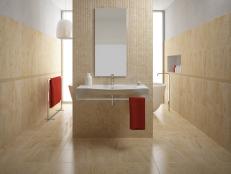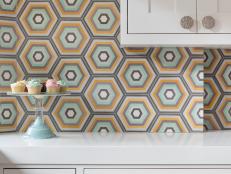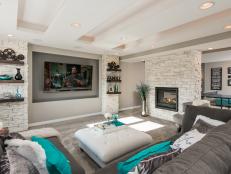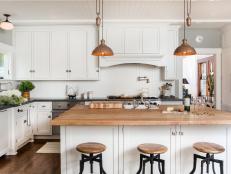The Best Window for a Mixed Climate
In order to make your home as energy efficient as possible, it's important to determine the best window for your climate: one that keeps heat out in the summer and, in the winter, keeps it in.
In older homes, windows are often one of the largest sources of heat loss in winter, due to air leakage and the windows' low insulating qualities. Windows are also the major source of unwanted heat gain in the summer.
Many windows, skylights and glazed doors now bear energy ratings or labels, similar to those placed on household appliances, to help builders and homeowners choose energy-efficient products. These labels have been developed by the nonprofit National Fenestration Rating Council, which operates a voluntary certification program that documents criteria corresponding to heat loss and gain methods, including U-factors and solar heat gain coefficient (SHGC).
According to NFRC, the U-factor is a measure of the rate at which a window conducts non-solar heat flow, representing the performance of the entire window, including the frame and spacer materials. The lower the U-factor a window has, the more energy efficient it is. Window U-factors generally range from 0.2 to 1.2.
A window with a high SHGC is more effective at collecting solar heat gain during the winter. A window with a low SHGC is more effective at reducing cooling loads during the summer by blocking heat gained from the sun. SHGCs range between 0 and 1.
Not too hot, not too cold
According to Mark Mikkelson, manager of Code, Regulatory and Technical Marketing, Andersen Windows Inc., "The best windows will keep heat inside in the winter, and keep unwanted heat out in the summer. Spectrally selective low-E glass provides these advantages."
Spectrally selective coatings are a special category of low-E (low-emittance) coatings — virtually invisible, metal or metallic-oxide layers on a window or skylight. They are rated for the amount of heat they permit to pass through the glass — the lower the number, the less heat gets through. These emissivity values range from around 0.04 to 0.35. Low-E coatings can be placed on different glass surfaces depending on the climate and orientation.
When selecting a window for a mixed climate, Mark advises remodelers to look for products with the following:
- NFRC-certified U-factor less than or equal to 0.40. The lower the U-factor, the less heat is transmitted.
- NFRC-certified SHGC less than or equal to 0.40. This will reduce air conditioning costs, reduce peak demand on the utility and improve comfort, especially in the swing seasons of spring and fall, Mark adds.
For more information, refer to the windows section of the Energy Star Website (www.energystar.gov) or to the Alliance to Save Energy's Efficient Windows Collaborative (www.efficientwindows.org).











































